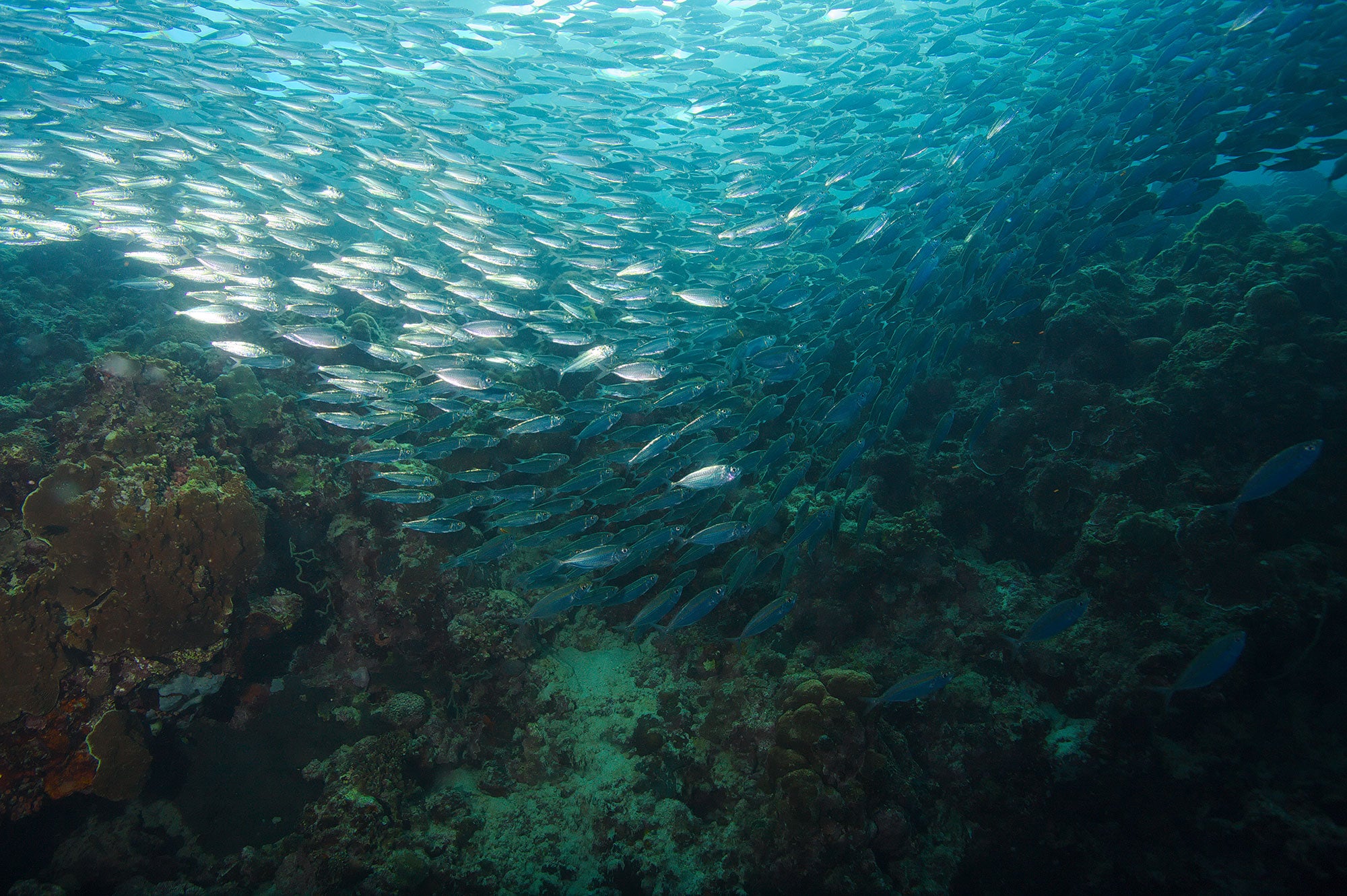Government Rebuilding Plan for Sardines on U.S. West Coast is Unlawful, Court Rules
Victory
—Earthjustice, representing Oceana, prevails in lawsuit to recover Pacific sardines to protect whales, sea lions, seabirds, and other ocean animals that rely on the small fish for food
Contact
Judge Virginia K. DeMarchi ruled this week that the National Marine Fisheries Service (Fisheries Service) failed to meet its legal obligation to rebuild the U.S. West Coast Pacific sardine population, which has been mismanaged for more than a decade and remains well below healthy population levels. Sardines are like the “energy bars of the sea” because so many marine species feed on the small fish.
Earthjustice, representing Oceana, sued the Fisheries Service in 2021 the U.S. District Court for the Northern District of California after Pacific sardines collapsed by more than 98% between 2006 and 2020.
This week, the judge ruled that the Fisheries Service’s rebuilding plan for Pacific sardines failed to prevent overfishing and did not ensure the population would rebuild within the legally required timeframe. The Fisheries Service must now develop a new rebuilding plan for sardines and ensure that their catch limits are at a level to prevent overfishing and ensure rebuilding.
Pacific sardines are small schooling fish that are essential food for humpback whales, dolphins, sea lions, brown pelicans, Chinook salmon, and other important commercially and recreationally caught fish and marine animals. Loss of sardines can cascade through ocean ecosystems. In the mid-2010s, more than 9,000 starving California sea lion pups and yearlings washed up on beaches and brown pelicans experienced unprecedented reproductive failures because they didn’t have enough food.
“This decision reaffirms a very important, very basic tenant of our fisheries law: that the Fisheries Service must set binding catch limits at a level that will rebuild overfished populations,” said Earthjustice attorney Danika Desai. “The court also agreed that the Fisheries Service can’t keep calculating its catch limits using science that it has known is faulty for over a decade, even as the agency refuses to fix that science. These holdings come at a critical time because the Fisheries Service is, at this moment, developing new catch limits for the next fishing year and will need to make sure it does so in compliance with the law. And it will need to revisit its overall management approach to promote sardine recovery.”
The ruling found that the Fisheries Service continued to use a faulty approach that assumed a faster growing population. That approach produced inflated catch limits because it did not reflect the agency’s own science, which showed that the sardine population has been extremely low and not producing well for over a decade. The Court also held that the Fisheries Service failed to take a hard look at the environmental impacts of the rebuilding plan under the National Environmental Policy Act — relying on incorrect assumptions about catch levels and failing to analyze the impacts on critical habitat for humpback whales.
“This ruling is hopefully the first step to finally rebuilding sardine populations to help ensure that whales, sea lions, brown pelicans, salmon, and other ocean animals will be able to find enough food to eat while also providing for future commercial fishing opportunities,” said Dr. Geoff Shester, senior scientist and California campaign director for Oceana. “We’re grateful that the court followed the science and recognized the need for a real plan with enforceable catch limits that will rebuild Pacific sardines for a healthy, abundant, and resilient ocean.”
After years of decline and warnings from fishery scientists, Pacific sardines were officially declared overfished in 2019. This triggered a legal requirement under the Magnuson Stevens Fishery Conservation and Management Act for the Fisheries Service to develop a rebuilding plan within two years that contained catch limits and other measures to rebuild sardine populations. Despite repeated urging from Oceana and others, fishery managers approved a faulty rebuilding plan with no changes to existing management. The Fisheries Service’s own analysis, in fact, determined the measures would not rebuild sardine populations.
“The Fisheries Service’s repeated endorsement of an inadequate rebuilding plan based on status quo measures was mind bogglingly shortsighted and not only ignored its own scientists but also failed to learn the lessons of history,” said Shester from Oceana. “With the Court’s direction, the Fisheries Service must now take action to recover these tiny yet hugely important fish to avoid a repeat of starvation events we’ve recently seen for sea lions and other animals and prevent potential long-term impacts on coastal communities that rely on vibrant ocean ecosystems that include healthy sardine populations.”
Current projections and the Fisheries Service’s existing management eerily mirror the disastrous collapse of sardines in the 1950s after their heyday of the “Cannery Row” era, immortalized by John Steinbeck. Historically, the sardine population peaked at 3-4 million metric tons, when the sardine fishery ranked as the largest in the western hemisphere. Similar mismanagement contributed to overfishing and a crash of the sardine population more than 70 years ago.
While sardines naturally have “boom and bust” population cycles, it is well documented that excessive fishing pressure exacerbates natural population declines. This week’s ruling will compel the Fisheries Service to set catch rates that reflect the actual productivity of the sardine stock and ensure timely population rebuilding to healthy levels.

Additional Resources
About Earthjustice
Earthjustice is the premier nonprofit environmental law organization. We wield the power of law and the strength of partnership to protect people's health, to preserve magnificent places and wildlife, to advance clean energy, and to combat climate change. We are here because the earth needs a good lawyer.